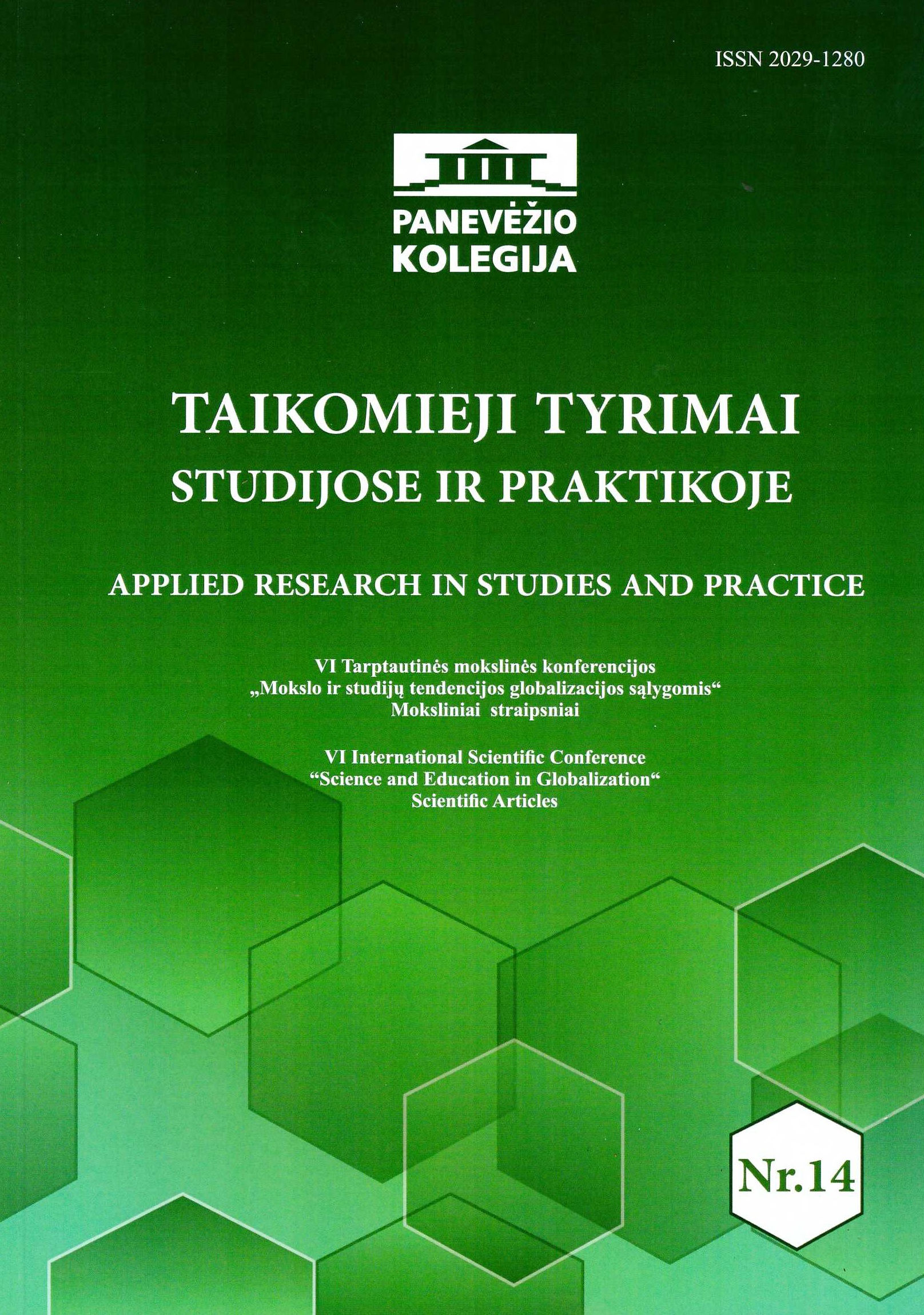GAMYBOS ĮMONĖS ATSARGŲ APSKAITOS TYRIMAS
INVENTORY ACCOUNTING RESEARCH OF MANUFACTURING COMPANY
Author(s): Liucija Budrienė, Audronė Meškelienė, Janina VaitiekienėSubject(s): Accounting - Business Administration
Published by: Panevėžio kolegija
Keywords: inventory accounting; inventory pricing; manufactured goods; production cost;
Summary/Abstract: Each company, as a profit-making entity, has the main objective of maximizing profits. The company's purpose is greatly influenced by its available current assets. In the manufacturing company, the largest part of current assets consists of stock, therefore, it is very important to properly organize their accounting. Inventories play the most important role for sales costs and partly in work result. The aim of the research was to analyze reserve the methodology of inventory accounting of a production company and submit proposals for its improvement. The methods of analysis and synthesis of legislation and scientific literature are used to justify the methods of accounting for inventory classification, valuation, pricing and consumption. The study uses enterprise data systematization, analysis and generalization methods to determine how the inventory accounting methodology complies with business accounting standards.Inventory are assets that are constantly moving to change their content, so inventory accounting may be different, adapting to the specific company activity, internal control system, inventory diversity. The normative acts distinguish the following main groups of stocks: raw materials and finished goods, goods and unfinished production. Inventories are recorded, they are measured at cost, while preparing the financial statements - the acquisition or production cost or net realizable value, depending on which one is lower. An error in the valuation of inventories may have an undesirable effect on the net and taxable profit for the coming year. The purchase price of the goods is the purchase price of the item, plus all costs related to the purchase. Deciding the cost of inventories include only significant with stock acquisition-related costs, inventories will be relatively lower than including all stock acquisition-related costs, and accordingly the sale of inventory, cost of goods sold relatively smaller or larger size will reduce the company's profits. Production cost of inventories includes the production-related direct and indirect production costs. Direct costs are costs that are directly related to the subject of a specific item, and indirect costs are not possible or difficult to assign to a specific item of expenditure. Calculating the cost of consumed and sold inventories, companies may apply one of three inventory pricing methods - FIFO, weighted average, and specific pricecing. With the inventory price fluctuating, each chosen pricing method can give a very different result. Different reserve pricing methods have a significant impact on the gross profit margin and taxes. Use of inventories or sales in accounting can be recorded continuously or periodically. Continuous reserve accounting method is more expensive, but rmore efficient information is available to manage inventory.A qualitative study of the inventory accounting methodology in a company, whose typical (main) activity is processing and preserving of fish, crustaceans and molluscs, was carried out. The study documents are used as the primary source of primary information. The discrepancies identified in the investigation are the provisions of the 9 Business Accounting Standard “Inventories”. Finished product is used for filling account No. 20140 Purchased goods for resale. In the process of recycling, to record the finished product, the Business Accounting Standard recommends using account No. 20130. This would allow fairer disclosure of accounting results. It has been determined that the company uses the old Accounts plan for accounting purposes. It is recommended that you update it according to the recommendations of the sample billing plan. The study revealed that Company inventory control is irregular. It is recommended that stocks be inventoried, if not monthly, at least quarterly, and that they will be used for financial transfers. An inventory accounting documentary study found that when reposing stocks, the company does not use special income documents. The data is recorded directly from primary stock purchase documents (invoices). This increases the likelihood of errors. It is recommended to use the accompanying document (delivery note) for the delivery of the finished product to the warehouse when documenting the production of inventories and yielding the produced products.The researchers has provided recommendations for the improvement of inventory accounting for the company. The company only includes the expenses of salaries and raw materials (direct production costs) into the costs of production of items. However, the cost of the products, obtained in this way, is not accurate. Therefore, it is recommended to include indirect production costs (disposable items, low-value assets, additional materials, water, electricity, gas, purchased services, depreciation of production facilities and equipment) for distributed product types. The criteria for allocating indirect costs must reflect, as fairly as possible, the relationship between the distribution of costs and the production and sales of products for which these costs are allocated. Therefore, various criteria for the allocation of indirect costs (costs of basic raw materials, costs of wages and salaries of key production workers, number of key production staff, direct production costs, etc.) are suggested for the different types of expenses. The improvement of inventory accounting of the company enables to more accurately determine the cost of inventories, to make a more precise estimate of the cost of production, and to justify the sale price of inventories. Taking into account the results of the research, it is possible to optimize not only the cost but also the sales revenue.
Journal: Taikomieji tyrimai studijose ir praktikoje
- Issue Year: 14/2018
- Issue No: 1
- Page Range: 118-126
- Page Count: 9
- Language: Lithuanian

